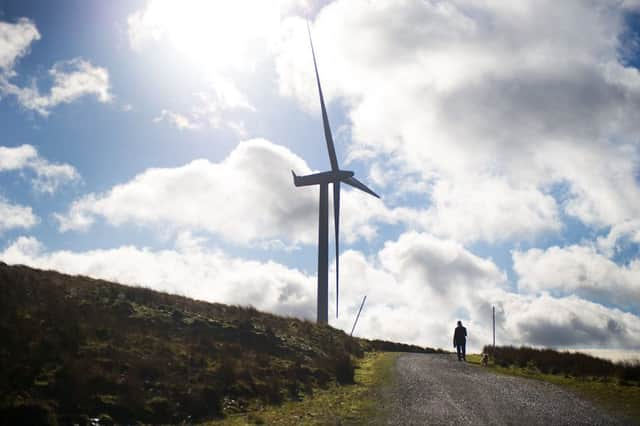Ross McDowall: Qualified relief on renewable rates
This article contains affiliate links. We may earn a small commission on items purchased through this article, but that does not affect our editorial judgement.


While publicans and hoteliers celebrated Finance Minister Derek Mackay’s compromise, the renewable energy sector also breathed a qualified sigh of relief that renewables would – to an extent - be included in the Scottish Government’s wider rates relief package.
Industry experts had questioned the viability of smaller hydro, solar and wind projects when it was initially revealed the Scottish Government’s wider revaluation of business rates did not include any transitional rates relief.
Advertisement
Hide AdAdvertisement
Hide AdPreviously, business rates relief of up to 100 per cent was available where the property was solely used for the generation of renewable heat or power, with the actual percentage amount of relief based on the rateable value of the land. These rules were changed from 1 April 2016 to tighten up the qualification criteria for existing projects and reduce the relief for new projects.
Existing projects could only claim relief where the property was being used solely for the generation of renewable heat or power, and a community organisation was invested in the project in return for at least 15 per cent of the annual profit and/or the amount of profit attributable to at least 1MW of the total installed capacity of the project.
For new projects that entered the valuation roll between 1 April 2016 and 31 March 2017, a smaller rates reduction is available which is not linked to community ownership. However, both of those arrangements are scheduled to come to an end on 31 March this year.
Concerns over a lack of clarity on what would happen after that date were amplified when it became clear that the April 2017 revaluation process could significantly impact many projects in the renewables sector.
Industry body Scottish Renewables warned that small-scale renewable energy generators faced potentially crippling increases in rateable values. It noted that one 100kw capacity hydro project was facing an upturn in rateable value of 650 per cent, from a current RV of £4900 to a provisional rate of £36,750.
Perhaps in response to these concerns, the Scottish Government announced the continuation of reliefs for renewable energy. It has proposed that the existing reliefs for qualifying new and existing schemes will continue, albeit the eligibility threshold for existing community schemes will be reduced from 1MW to 0.5MW. Operators of small-scale hydro schemes of up to 1MW also received the welcome news that the rates increase will be capped at 12.5 per cent.
It’s safe to say one of the most challenging issues for renewable energy generators during the past few years has been the withdrawal of the Renewable Obligation and the Feed in Tariff incentives and the different focus of the replacement Contract for Difference. One should not, however, discount the impact of increased business rates. When considering the economics of a planned project, the new rateable values will weigh more heavily on a balance sheet.
Advertisement
Hide AdAdvertisement
Hide AdWhilst there is unfortunately no specific relief for small-scale onshore wind and solar generators, it is reassuring that the renewables industry has been included in the wider package of additional support.
What happens in a year’s time is, however, anyone’s guess. As Scottish Renewables says, businesses do not know what their bills will be from April 2018, which puts the onus on government, the assessors and industry to work together to review the way values are calculated and ensure renewable energy projects are taxed fairly and proportionately.
• Ross McDowall, legal director and planning and environmental law specialist at Pinsent Masons
